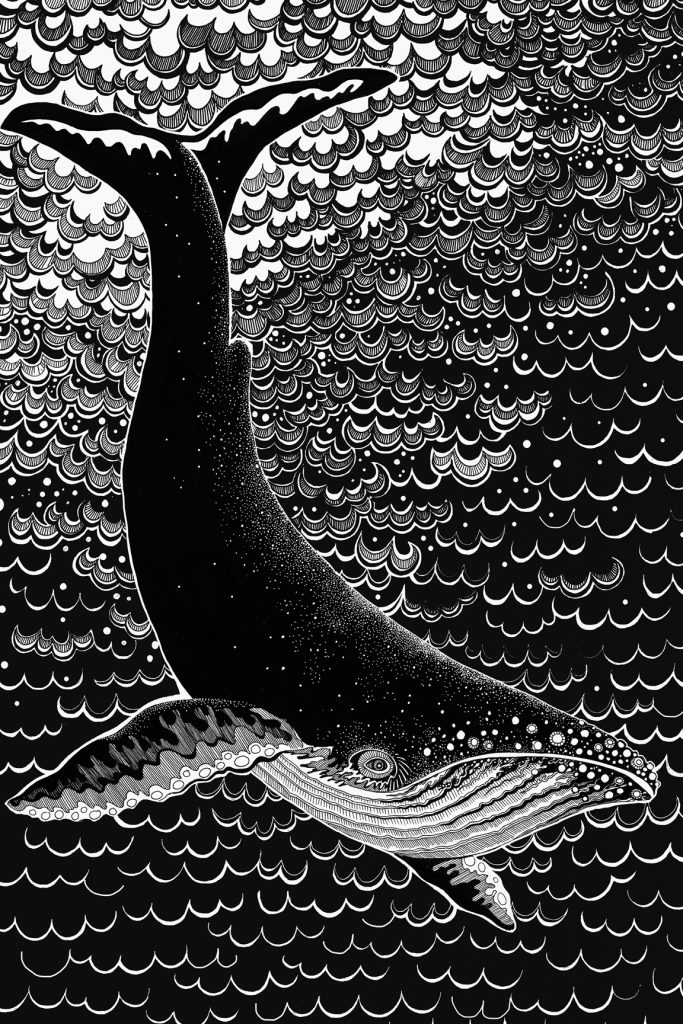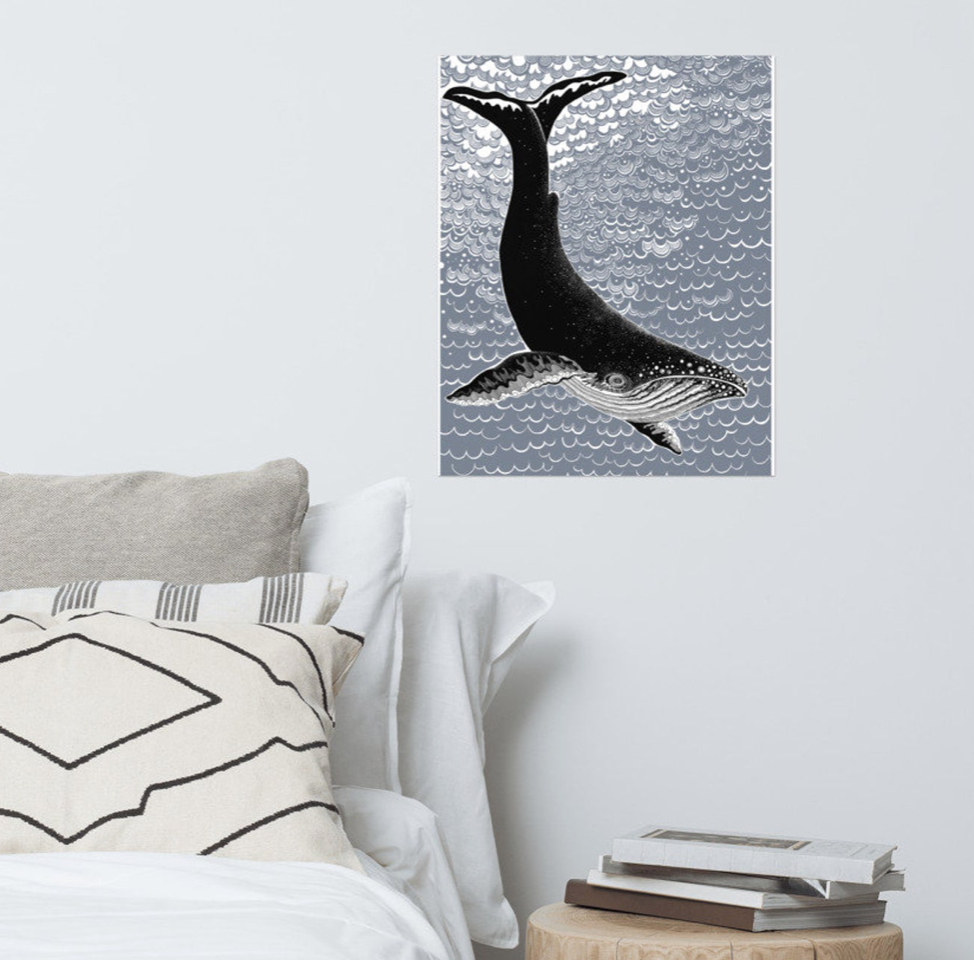Humpback whale
(42.0 x 59.4cm, Ink and Pen on Paper, 2021)

Their latin name Megaptera novaeangliae, meaning “big wing of New England” is a reference to their huge flippers, the largest in the animal kingdom reaching up to 5 metres in size. While they are to be found in every one of the world’s seven seas, they generally migrate towards the equator in winter and retire to higher latitudes in summer.
They produce haunting and complex songs that can travel for many miles in the water. While the exact reason for these vocalisations is not known, echolocation has been proposed although, the perceived difference between the sexes in the amplitude and duration of the songs suggests that they primarily function as a means for the males to attract mates and deter competitors. The syntactic structure of these songs, composed of many individual parts, ressembling notes, verses and choruses that form a song of around 30 minutes, suggests a degree of culture and communication learning behaviours, such as not known from other animal species. Males in a similar region will sing the same songs, and will almost simultaneously pick up on slight modifications and adaptation leading to the song to evolve over time.
The original is available, follow the link below to add it to your cart!
For museum-quality art prints (starting from 19 USD) click on the image below!

